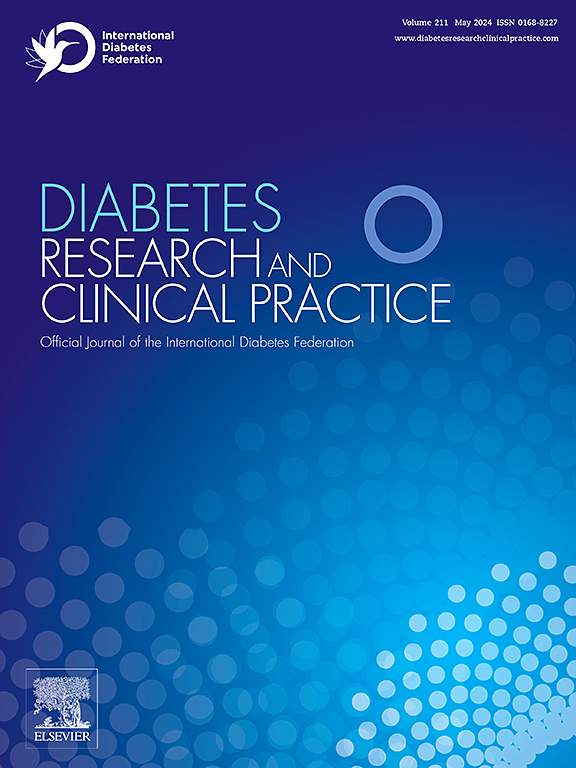Risk factors for bone fractures in type 2 diabetes and the impact of once-weekly exenatide: insights from an EXSCEL post-hoc analysis
IF 6.1
3区 医学
Q1 ENDOCRINOLOGY & METABOLISM
引用次数: 0
Abstract
Aims
We investigated bone fracture predictors in people with T2D enrolled in the EXenatide Study of Cardiovascular Event Lowering (EXSCEL) and evaluated the effects of once-weekly exenatide (EQW) on incident bone fractures.
Methods
EXSCEL randomised 14,752 people to EQW 2 mg or placebo with a median follow-up of 3.2 years. In this post-hoc analysis, baseline features associated with incident bone fractures were evaluated with multivariable Cox proportional hazard regression models, accounting for age and sex as confounders. Incidence rates were compared between study arms, and time-to-event analyses performed using Cox-proportional hazard models.
Results
The primary outcome occurred in 168 (1.1 %) participants. The presence of neuropathy at baseline was associated with a 50 % higher risk (hazard ratio [HR] 1.50, 95 % confidence interval [CI] 1.10–2.05, P = 0.010) of incident bone fractures, while taking metformin at baseline was associated with a 47 % lower risk (HR 0.53, 95 %CI 0.39–0.73, P < 0.001). Incidence rates of bone fractures were similar in the EQW group and in the placebo group (HR 1.11, 95 %CI 0.82–1.51, P = 0.49).
Conclusions
Bone fractures in people with T2D occur more frequently in those with diabetic neuropathy, but less frequently in those taking metformin. No evidence was seen of any impact of EQW treatment on bone fractures.

求助全文
约1分钟内获得全文
求助全文
来源期刊

Diabetes research and clinical practice
医学-内分泌学与代谢
CiteScore
10.30
自引率
3.90%
发文量
862
审稿时长
32 days
期刊介绍:
Diabetes Research and Clinical Practice is an international journal for health-care providers and clinically oriented researchers that publishes high-quality original research articles and expert reviews in diabetes and related areas. The role of the journal is to provide a venue for dissemination of knowledge and discussion of topics related to diabetes clinical research and patient care. Topics of focus include translational science, genetics, immunology, nutrition, psychosocial research, epidemiology, prevention, socio-economic research, complications, new treatments, technologies and therapy.
 求助内容:
求助内容: 应助结果提醒方式:
应助结果提醒方式:


